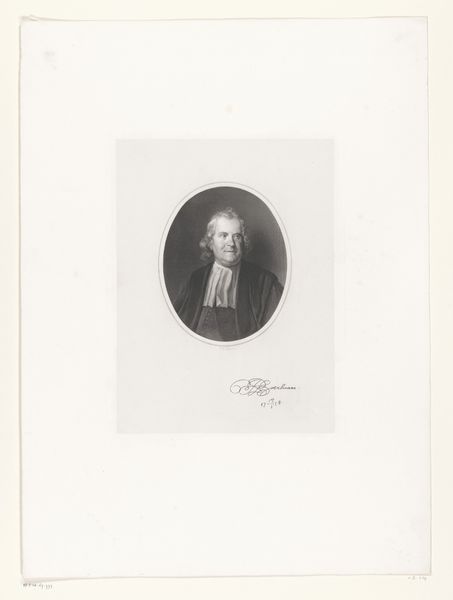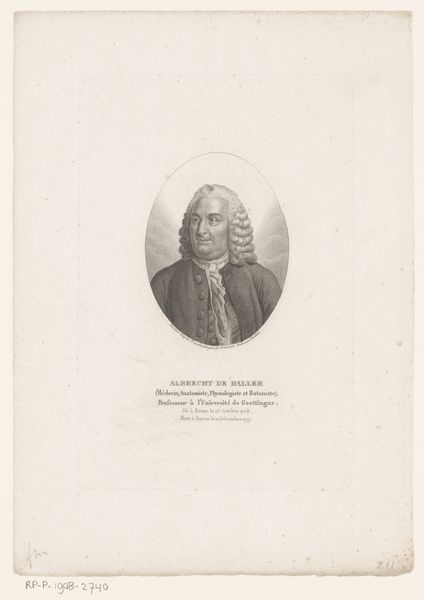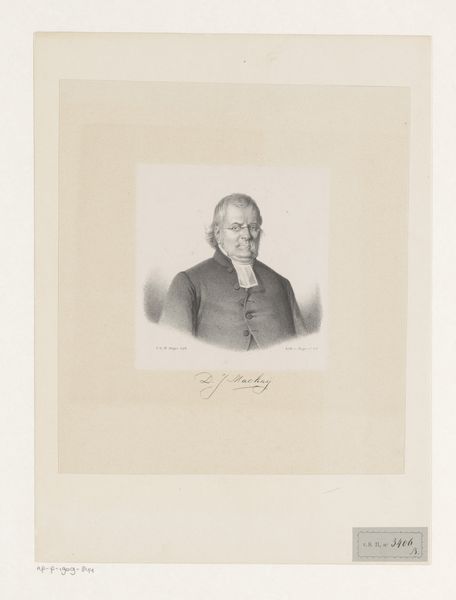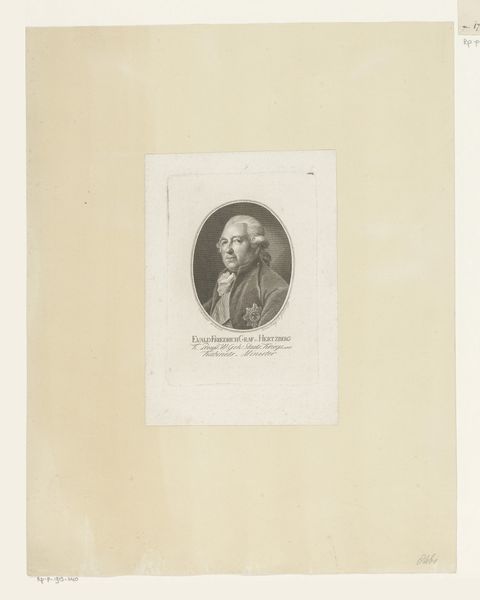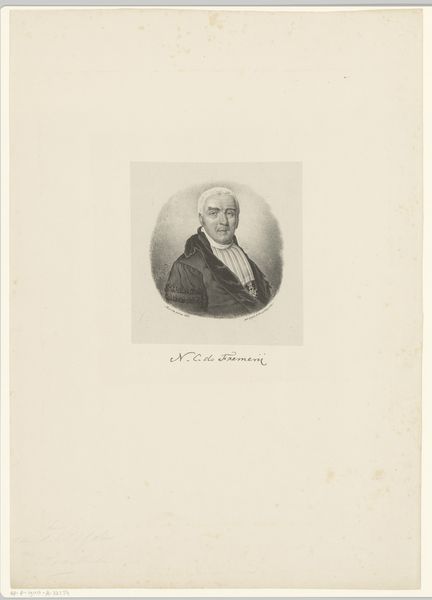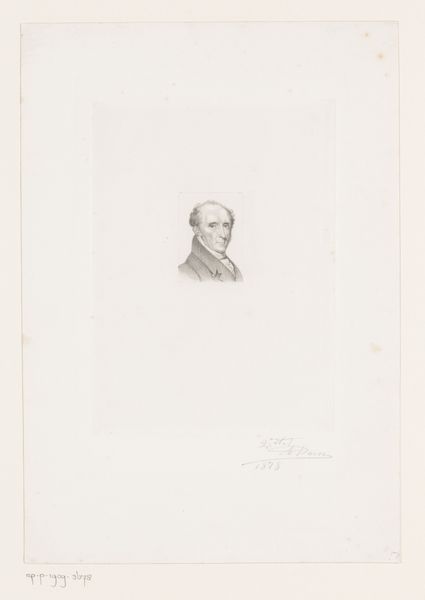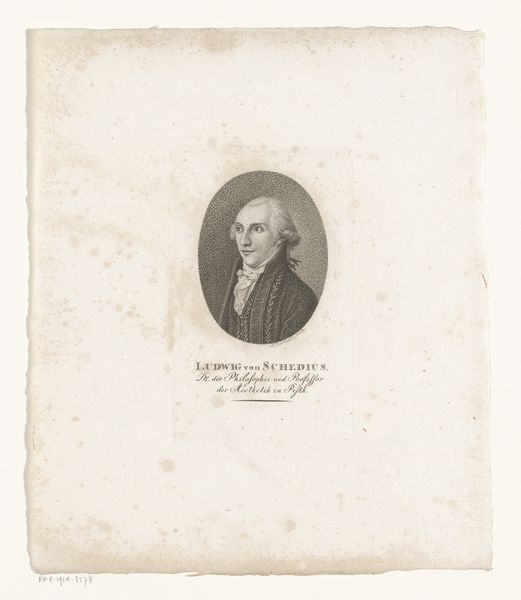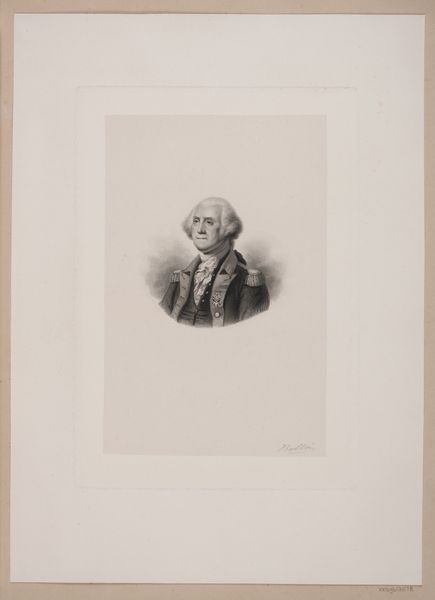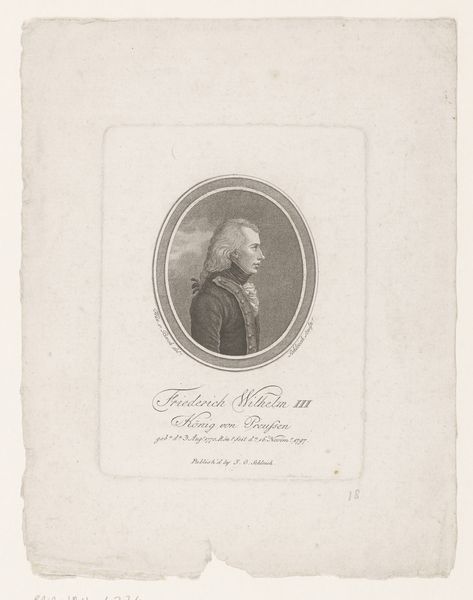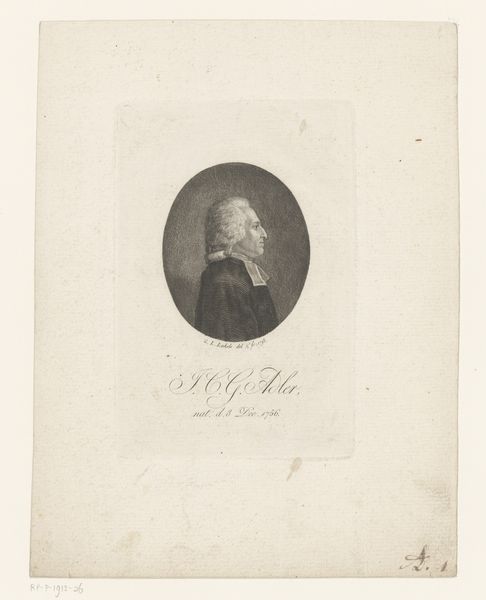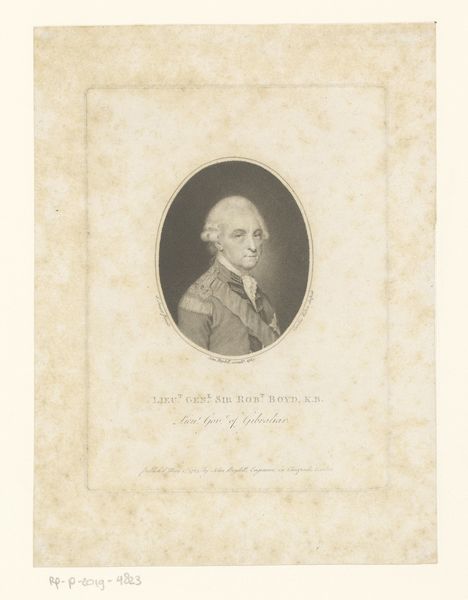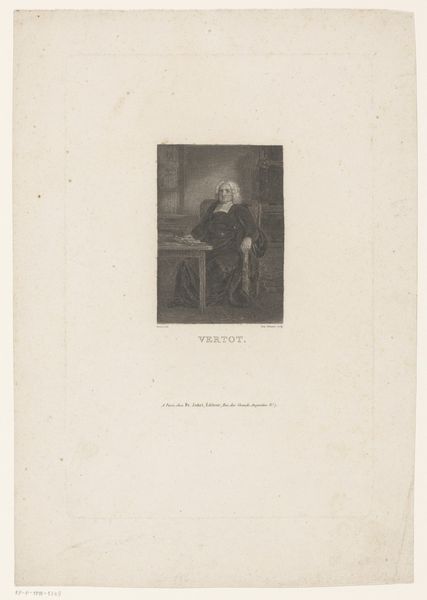
drawing, print, etching, paper, graphite, engraving
#
portrait
#
drawing
#
ink paper printed
# print
#
etching
#
light coloured
#
old engraving style
#
paper
#
graphite
#
engraving
#
realism
#
monochrome
Dimensions: height 428 mm, width 297 mm
Copyright: Rijks Museum: Open Domain
Frederik Hendrik Weissenbruch made this portrait of Hendrik Grave using etching. The image is formed by lines bitten into a metal plate with acid, then printed, resulting in a delicate and precise representation. Etching allowed Weissenbruch to capture the fine details of Grave’s attire and features, and the textures of his hair and clothing are subtly rendered through the density and direction of the etched lines. This method was especially favoured for portraiture, as it lent itself to replicating the textures and fine details that conveyed status and character. The technique itself demands a high degree of skill and control, with the artist carefully manipulating the acid to achieve the desired effects. Consider the social context of this work; etching was a process that allowed for the relatively easy reproduction of images, making portraiture more accessible beyond the painted image for a broader audience. In the context of 19th-century Dutch society, portraits like this would have served as important markers of identity, status, and belonging. By understanding the materials and processes involved, we gain insight into the cultural values and social dynamics of the time, transcending traditional art historical boundaries.
Comments
No comments
Be the first to comment and join the conversation on the ultimate creative platform.
